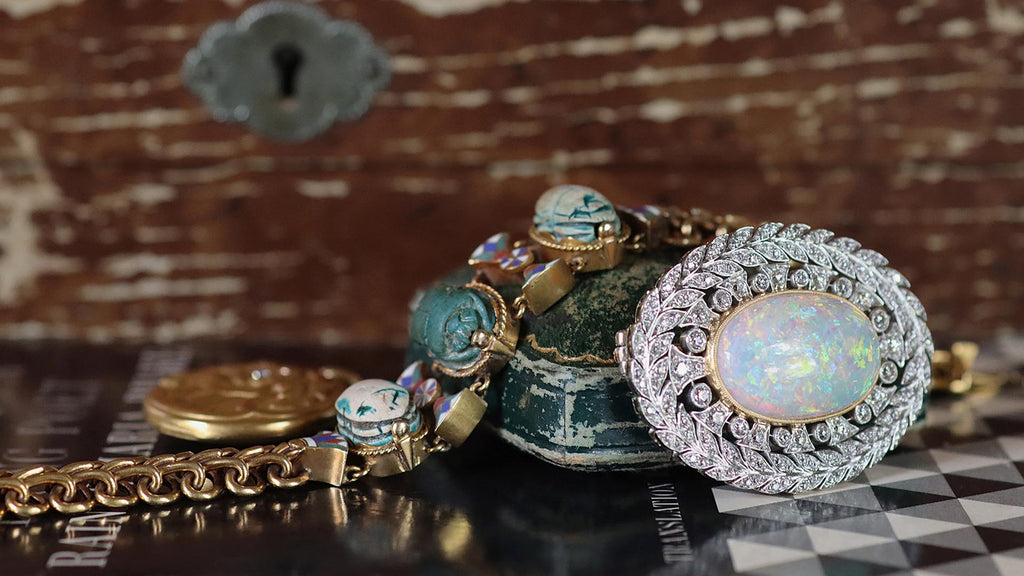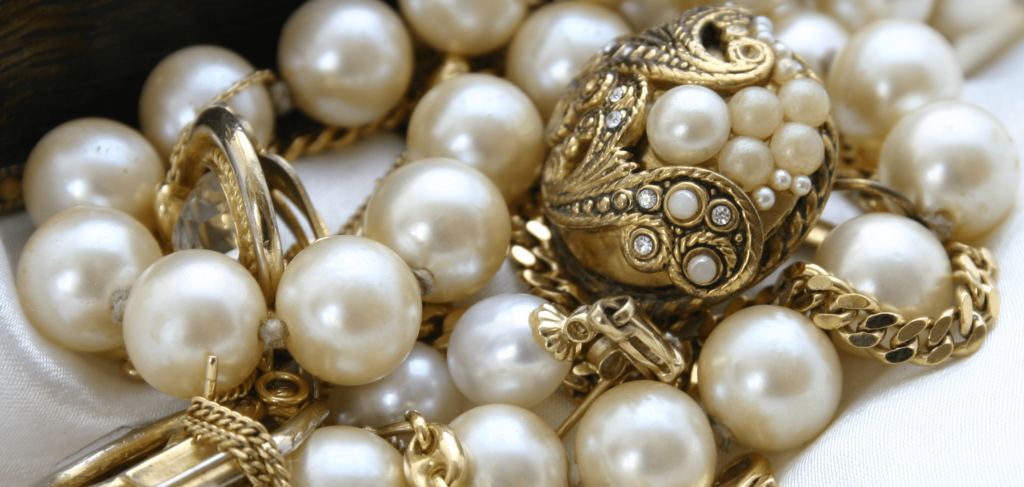Discover one-of-a-kind antique jewelry for gifts.
The Remarkable Globe of Vintage Fashion Jewelry: Exploring Its Several Classifications and Functions
Vintage fashion jewelry stands for an exciting crossway of virtuosity and background, enveloping the significance of various eras via its complex layouts and products. Each group, from the romantic Victorian items to the ingenious Art Deco productions, discloses not just visual choices but additionally cultural stories of the times. Understanding the identifying characteristics of these pieces, along with their notable materials and gems, opens up a window right into the past that is both informing and fascinating. antique jewelry stores austin tx. As we explore these elements even more, one might wonder what hidden stories lie within the exquisite craftsmanship of each antique gem.
Historical Periods of Vintage Precious Jewelry
Antique fashion jewelry is delicately connected to the historical durations in which it was created, mirroring the creative patterns, cultural values, and technological innovations of those times. The evolution of fashion jewelry style can be mapped through different noticeable eras, each noted by unique designs and materials.
The Georgian period (1714-1837) is identified by detailed designs and using natural themes, often including gems such as garnets and rubies. antique engagement rings austin. Following this, the Victorian duration (1837-1901) saw the intro of emotional fashion jewelry, with designs that usually communicated personal meanings, such as necklaces and mourning items
The Edwardian era (1901-1910) welcomed beauty, making use of platinum and delicate lattice job, while Art Nouveau (1890-1910) concentrated on natural types and making use of enamel, mirroring the impact of nature.
The Art Deco duration (1920s-1930s) introduced geometric shapes and strong colors, showcasing improvements in craftsmanship and products. Each of these ages not just highlights the creative development of its time but also acts as a representation of the social and social shifts that affected the globe of jewelry. Comprehending these historic contexts enriches the recognition of antique jewelry today.
Secret Features to Determine
When assessing antique fashion jewelry, a number of vital characteristics can help identify its age and authenticity. First, the materials utilized are vital; pieces from different ages usually feature particular metals and gems. For circumstances, Victorian fashion jewelry frequently incorporates gold, while Art Deco items might use platinum and dynamic colored rocks.
Following, workmanship is a substantial indication. Handmade products, typical in earlier periods, display unique imperfections and details that mass-produced items do not have. antique jewelry stores austin tx. Inspecting the setup and rock positioning can expose signs of handwork, such as irregular prongs or varying stone shapes
Furthermore, characteristics and stamps play an important role in authentication. Many antique items birth marks showing the steel's purity and the producer's beginning, which can provide beneficial insights right into the fashion jewelry's background.
Finally, layout themes often show the era's visual trends. Art Nouveau is identified by streaming lines and all-natural forms, while Retro precious jewelry welcomes bold, geometric forms. By analyzing these key qualities-- products, craftsmanship, trademarks, and layout motifs-- collection agencies and fanatics can much better ascertain the authenticity and historic value of antique fashion jewelry pieces.
Popular Vintage Jewelry Categories
Different groups of antique jewelry showcase the rich history and varied designs that have actually advanced over time. Among the most popular categories are Victorian, Art Nouveau, Edwardian, Find Out More and Art Deco, each mirroring the visual patterns and social influences of their particular durations.
Victorian precious jewelry, extending from 1837 to 1901, is defined by luxuriant layouts and nostalgic themes, commonly including importance and intricate craftsmanship. Art Nouveau, which prospered in between 1890 and 1910, highlights natural types, streaming lines, and nature-inspired motifs, often featuring enameling and innovative techniques.

In addition, there are particular groups like Georgian and Retro precious jewelry, each with unique qualities and historic importance. Enthusiasts and enthusiasts value these classifications not just for their charm yet likewise for the stories they tell concerning the ages in which they were developed.

Notable Products and Gemstones
Checking out noteworthy materials and gems utilized in antique jewelry discloses the elaborate workmanship and visual values of different ages. Antique precious jewelry showcases a diverse selection of products, each offering unique features and relevance. Gold and silver, common for their malleability and appeal, Clicking Here have been preferred for centuries, frequently embellished with elaborate inscriptions or fretwork job.
Gemstones likewise play a crucial function in specifying the appeal of antique pieces. Rubies, revered for their sparkle, were generally embeded in Victorian precious jewelry, highlighting both luxury and condition. Tinted gems such as sapphires, emeralds, and rubies came to be signs of love and were often integrated right into intricate designs during the Art Deco duration.
In addition, much less conventional materials like enamel and pearls emerged, including deepness and texture to lots of layouts. Enamel techniques, specifically in the Renaissance, showcased vibrant colors and in-depth scenes, while pearls, wanted for their natural appeal, were frequently utilized in both pendants and jewelry.
The selection of materials and gems in antique fashion jewelry not only reflects the artistic trends of the time but also provides insight into the social and cultural values of the ages in which these pieces were created.
Caring for Antique Parts
Appropriate look after antique jewelry is necessary to protect its appeal and stability with time. Each piece narrates, often reflecting the craftsmanship of a details period, and therefore requires specialized attention.
To start, it is important to store antique precious jewelry in a controlled setting, away from straight sunshine and original site moisture. Regular cleansing is essential, however should be come close to with care; avoid severe chemicals and rough materials.

Professional assessments and upkeep can likewise be beneficial. A competent jeweler can evaluate for loose stones, weakened settings, or various other concerns, making certain the long life of these valued things. By adhering to these treatment guidelines, antique jewelry can remain not only a treasured antique but likewise a sensational depiction of art and history.
Final Thought
The exploration of antique jewelry exposes a diverse landscape formed by historical ages, artistic activities, and unique workmanship. Appropriate treatment makes sure the longevity of these artefacts, enabling future generations to experience the beauty and value of antique precious jewelry.